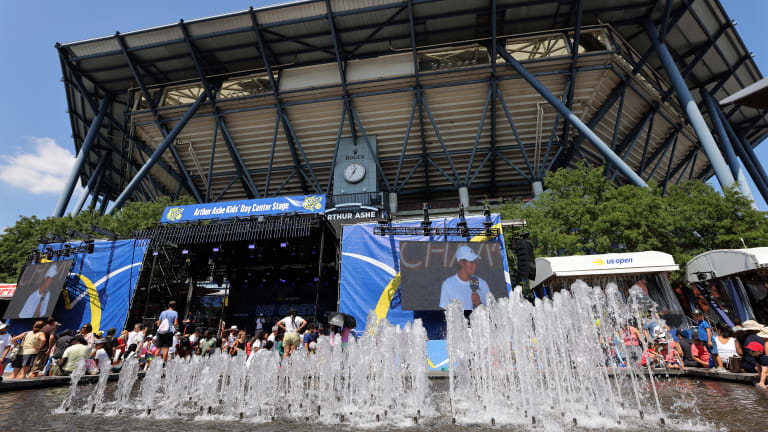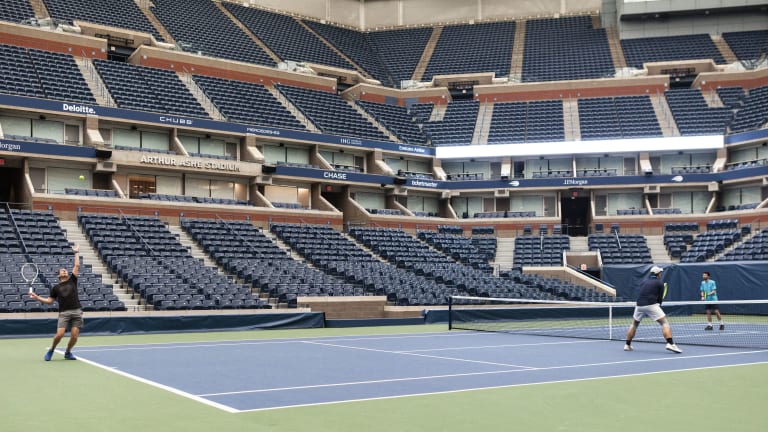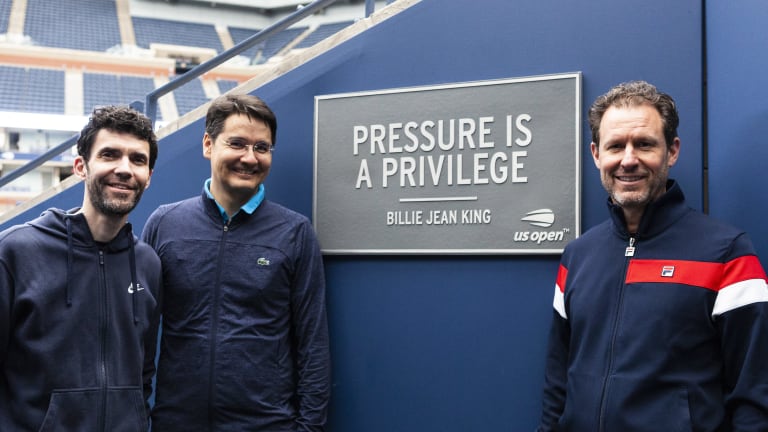As Carpenter and Goode and their foursome began to play, a few adjustments to their exalted surroundings were necessary. They had to learn, when a lob went up, to pick the ball out among the riot of girders that make up the roof. They also had to get used to the thunderous sound of the airplanes that flew in and out of nearby LaGuardia airport; for anyone old enough to remember the days before they were rerouted during the Open, the sound can bring back memories of a more chaotic era at Flushing Meadows.
Otherwise, though, the court itself is no different than any other. Perhaps the biggest surprise may have been how quickly everyone settled in.
“It didn’t take long to get comfortable,” Goode said.
For Carpenter, the rush of adrenalin that came with being in Ashe helped him get on top of shots that he might normally be late on.
“I was pumped; I sort of had a king-of-the-world feeling,” he said.
When they were done, the foursome, like true winners, autographed a set of balls. (Instead of firing them into the stands, they took them home.)
If the dimensions of the court are familiar, though, the fish-bowl vibe in the arena is not. On court, the seats feel closer to the action than you might expect. Even when they’re empty, it’s easy to imagine them being full, and how alone a player could feel at the center of them. It’s not surprising that it has taken numerous great players a couple of years to adjust to the clamorous intensity of the Open. Winning there would seem to require more than just playing well. You have to learn to embrace the gladiatorial atmosphere, too, and use the colossal fan energy in the building to your advantage.
“You’re just one little person out there,” Goode said. “You really get an appreciation for how much the players have to focus.”



